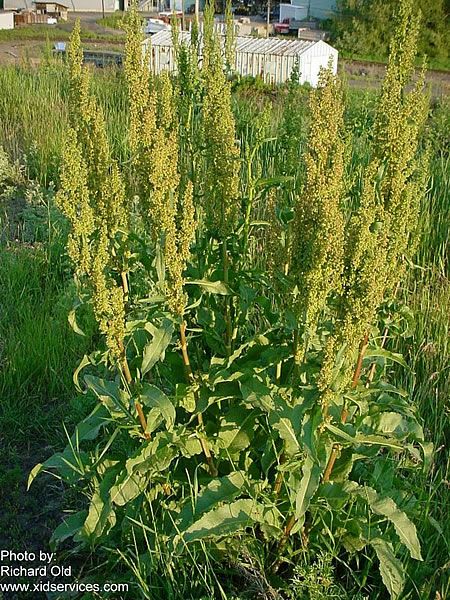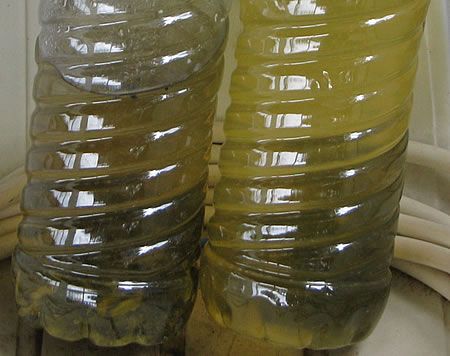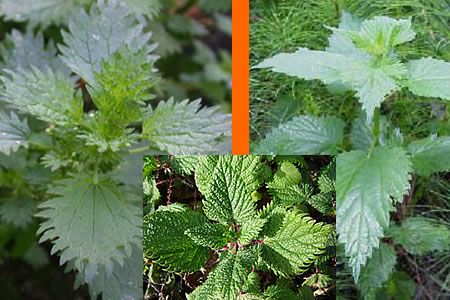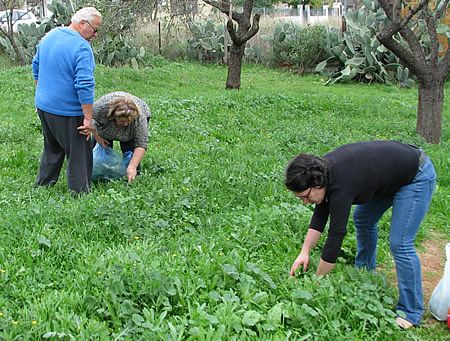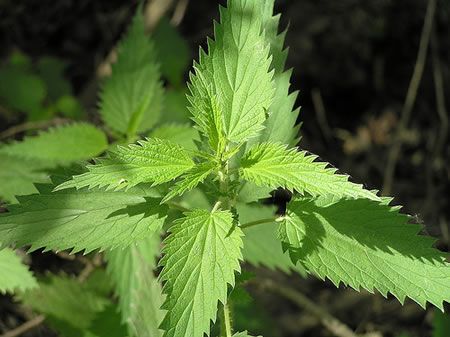After reading this article, you will no longer see and treat weeds as trouble, but from an alternative perspective. You will treat them as indicators of the health of your soil and nutrients that your soil contains or lacks.
We present 25 common weeds and explain when and where they choose to grow. It is not random!
Weeds grow only where certain soil conditions are met. You can take advantage of their presence and learn more about your soil.
You will get answers to questions like: “Why some weeds grow in parts of my garden and not in others?”, “Is there a reason that some weeds appear in my garden and some are not?”
So keep reading and welcome to the wonderful world of weeds as soil’s nutrient indicators!
Common thornapple (Datura stramonium L.), Genus Solanaceae
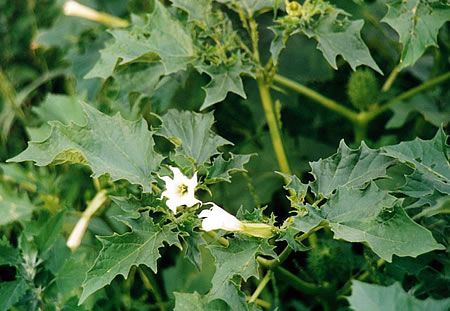
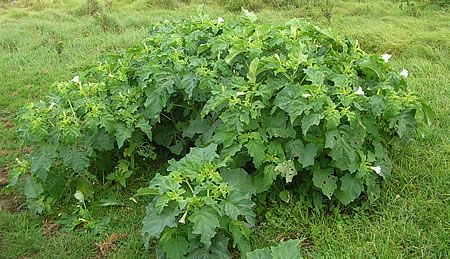
Greek name: Τάτουλας.
This is a poisonous weed, but a valuable source of medicinal substances.
It is particularly useful as an intercrop in pumpkins and protects many plants from the Japanese beetle (Popillia japonica). The smoke from dried leaves of common thornapple calms bees during various beekeeping operations, but it should be used sparingly.
What does the presence of Common thornapple in our field and garden indicate?
Common thornapple has vigorous growth in soils where the organic matter is in the decomposition stage but takes place under anaerobic conditions. The dormancy of the seed is interrupted when there is dew and enough organic matter in the soil, with a simultaneous reduction in aerobic bacterial activity (the action and growth of actinomycetes and other microorganisms), so that the decomposition of organic matter takes anaerobic direction and produces ethane and methane. This occurs when the soil is cultivated in late autumn or when late ploughing is carried out in spring. For example, when corn crop residues (stover) are incorporated raw into the soil in a wet season, it is very likely that Common thornapple will occur as a weed in the next crop. In conditions such as those described above, we have availability of excess cobalt from the soil system. Organic matter during decomposition regulates the availability of cobalt. Of course, if the level of calcium is satisfactory, this in itself will guarantee a different direction of the process of decomposition of organic matter.
Goosefoot (Chenopodium album L.), Genus Chenopodiaceae
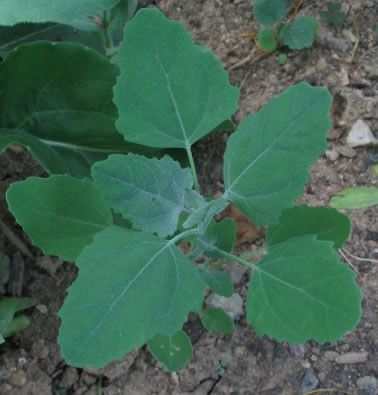
This weed has many common names: Baconweed, Bacon Weed, Fat Hen, Frost-blite, Goosefoot, Lambsquarters, Pigweed, White Goosefoot.
Greek name: Λουβουδιά, Χηνοπόδιο.
Deep-rooted plants such as Goosefoot bring nutrients from the deeper layers to the surface through the shoots and leaves. When the plants are yielded or put into compost, the nutrients become available to flat root plants. In this way the soil is enriched with nutrients so that it is not depleted by continuous cultivation and losses due to leaching.
Its intercropping with potatoes is particularly favorable, and it is advisable to allow its presence in the garden in moderate numbers, especially when corn is grown. It also favors the growth of cucumber, pumpkin, watermelon, and gives additional vigor to flowers such as zinnia, daisy and pansies.
Pigs and chickens love it in its young stages. It is a very good nutrient substrate for several insects, and can be used as a plant trap.
Also used for silage it is a valuable source of nutrients. Cultivated purple amaranth and goosefoot are excellent for silage because both are high in protein.
Annual weed that is propagated by a huge number of seeds which go dormant and retain their germination for decades.
Although it is a very common weed is not harmful.
It stores high quality phosphorus in its tissues. It is a close relative of spinach and is edible.
The young shoots can be cooked and eaten like asparagus. It is richer in vitamin C than spinach, much richer in vitamin A, but not as rich in iron and potassium, but is still a good source of nutrients, especially calcium.
It is a plant associated with the presence of man and crops.
What does the presence of the Goosefoot plant in our field and garden indicate?
The Goosefoot illustrates the good nutritional status of the soil. It establishes itself in rich and fertile soils, with properly digested humus.
Humus grows in soils where the decomposition of organic matter is progressing in the right direction, and we have a release of good quality and a remarkable amount of nutrients.
It is an indicator of ideal production conditions in a biologically active soil system
There is no problem of poor drainage and water accumulation where both goosefoot and cultivated purple amaranth appear.
These weeds are the best possible laboratory analysis in terms of assimilable phosphorus released for the daily needs of the plants.
Where goosefoots are grown every year, there is no need to purchase and add phosphate fertilizers.
There is no need to buy potassium or increase potassium levels even if soil testing (analysis) suggests that the assimilable nutrient reserve is not at its maximum.
Purple amaranth or Guernsey pigweed (Amaranthus spp.)
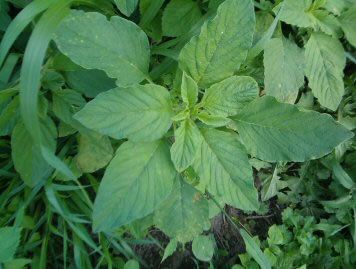
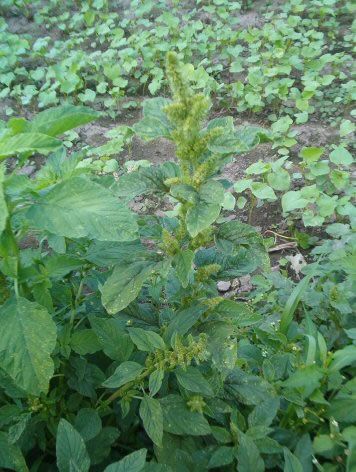
Greek name: Βλήτο, Βλήτα.
Not so obnoxious weeds since they can be used as humans and pet food when tender.
Pigs love them when they are in the young-straw stage, but avoid them as they mature. They seem to perceive that the mature Guernsey pigweed contains nitrates which, by the action of enzymes in the body, can cause poisoning. The same can happen to humans.
Co-cultivation of Purple amaranth with onions and corn is very favorable.
The rough Purple amaranth makes eggplant, pepper and tomato more resistant to insect infestation.
Finally, its intercropping with carrots, radishes, redbud, beetroot is good and improves potato yields. In all cases, however, it must be kept at moderate levels so as not to choke the crop.
What does the presence of Purple amaranth or Guernsey pigweed in our field and garden indicate?
The soils in which Purple amaranth occurs are well balanced.
Low organic matter content and a period of drought trigger its germination.
Unlike other related species of the Amaranthidae family, this species germinates in sandy soils.
Moreover, in the soils where this amaranth is found potassium and manganese are at a relatively high level and iron is at an even higher level. Similarly for zinc. In fact, low humidity is a reason for the occurrence of this weed rather than the disturbance of nutrients in the soil.
The presence of Purple amaranth indicates an abnormal calcium and potassium ratio (high potassium and low calcium), with effects on organic matter.
Phosphorus complexes need attention when this weed occurs. It is found in disturbed soils, anywhere, and is a plant notable for its ability to draw nutrients from the subsoil while loosening the deeper soil layers.
The presence of synthetic substances in the soil and various salts of potassium and magnesium chloride and undigested manures often contribute to the spread of this weed.
Horsetail (Equisetum arvense)
(Image source: http://www.henriettesherbal.com/pictures/p05/pages/equisetum-arvense-3.htm)
This weed has many common names: Horsetail, common horsetail, field horsetail, scouring rush, western horsetail.
Greek name: Πολυκόμπι, Ιππουρίδα των αγρών.
Horsetail is a perennial weed that reproduces by seeds and by rhizomes that occupy a large area and at great depth, in which it stores carbohydrates for future needs. Field horsetail has the ability to store cobalt, and differs from other related species that do not have the properties described below. The latter show dark rings along the length of the shoots, formed by small black leaves.
Field horsetail is used for the preparation of extracts. In biodynamic agriculture, horsetail extract (0.5-2 % p/w) is made by boiling the weed in water for 10-15 minutes.
Alternatively, the dried field horsetail can be left in a container with water at a ratio of 0.5-2% p/w for 10 days at ambient temperature and then drained. Its extract is diluted in five times the amount of water and sprayed.
It helps to control fungi, especially leaf curl in peach trees and is used for spraying against fungal pathogens (powdery mildew, wet rot) on grapes, vegetables, flowers, and other fruit.
Although not as strong as Bordeaux paste in controlling fungi, people involved in biodynamic agriculture report very good results from its use.
It also affects and activates life in the soil. But they stress that it should not be administered before the first phase of fungal infection, and care should be taken to avoid wet conditions in the environment of infected plants.
Its active substance against fungi and diseases is the high percentage of silica contained in the shoots. If we burn a piece of shoot on a low fire, when all its organic material has disappeared, we can observe the white skeleton of the plant, which is composed of silica and is the actual structure of the shoots. Many books mention the horsetail as a poisonous plant for farm animals. However, it has been used to treat liver disorders in cattle, horses and dogs.
Rarely is this weed considered a problem. This plant has not been given the attention it should be. It has been found that the cells of plants sprayed with the extract are strengthened. Also, the presence of silica on sprayed plants helps to absorb sunlight more effectively when conditions are wet, making it more difficult for pathogenic fungi to grow. Finally, silica is a powerful insecticide in the form of an aerosol.
What does the presence of horsetail in our field and garden indicate?
The appearance of horsetail, indicates poor drainage and slightly acidic soil.
It prefers sandy or gravelly soils with high soil moisture levels but can survive in a dry summer.
Its presence is generally associated with a high level of carbon in soil organic matter.
Cultivation of cereals limits the growth of the weed.
Johnson grass or Johnsongrass (Sorgum halepense L.), Genus Graminae
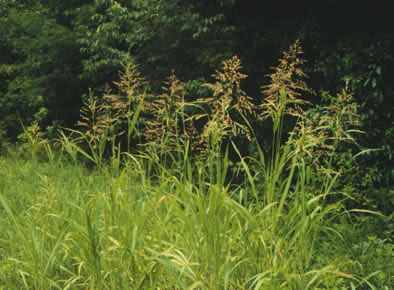
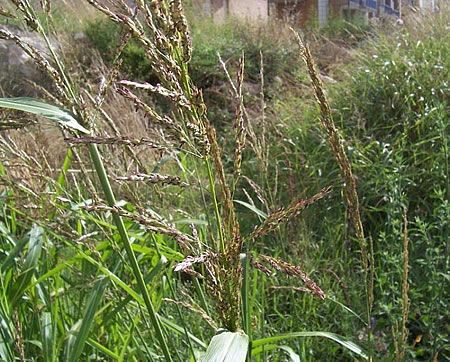
Greek name: Βέλιουρας.
Johnson grass is a perennial weed which reproduces by seed and by rhizomes. Its sessile root system allows it to reproduce everywhere with little or no geographical constraints.
What does the presence of Johnson grass in our field and garden indicate?
The spread of Johnson grass is an indication of an interaction of insecticides, potassium chloride (KCL), zinc blockers and soil compaction.
In such soils the calcium level is very low. Anaerobic bacteria dominate, indicating poor decomposition of organic residues and poor drainage.
Problems are expected with the disposal of aluminium in heavy clay soils. Soil porosity and organic matter are expected to be low.
Potassium, boron and sulphur are at high levels, with magnesium, copper, zinc, chlorine and selenium at high levels and complex relationships.
When weeds like Johnson grass grow, it simply means that the soil lacks fungi that are conducive to commercial crops. It means the crop is at a disadvantage, and the weed is at an advantage. It first establishes and then becomes a formidable competitor to any grain crop or pasture.
Johnson grass prefers depleted soils and low organic matter content. It also grows in soils with low calcium levels regardless of soil PH.
If there is intense biological activity and the decomposing organisms are suitable, then weed will not grow. The level of iron in the soil affects the presence of weed.
It also germinates in sugar cane crops. Most sugarcane crops have an unbalanced pH system, excessive iron, low magnesium or the ratio of the above two is disturbed.
Green foxtail (Setaria virids), Genus Graminae
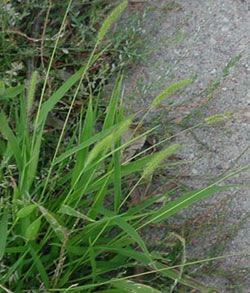
This weed has many common names: Green foxtail, green bristlegrass, wild foxtail millet.
Greek name: Σετάρια.
Green foxtails are annual weeds that reproduce only by seed in and around cultivated areas. The root system of green foxtail exerts mutualistic effects on other plants.
When the soil is worked with heavy machinery and is wet, there is a risk of compaction of the subsoil layers. Heavy machinery almost always contributes to this compaction. Even if the soil is worked with a light disc, the tractor wheels compress the soil to a depth of 15cm-1m. If the soils are also rich in organic matter (so there is an abundance of humic acids), then there is an absence of air and an increased concentration of carbon dioxide which cannot escape from the soil due to compaction. This phenomenon triggers the germination process of the green foxtail.
The movement of tractors in the field compresses the soil and removes the air present in its pores so that when it dries out, the soil is very hard. Again, this favors the growth of green foxtail. This explains why these weeds appear late in the growing season after the final cultivation of the soil.
The conditions prevailing in the spring when preparing the soil for sowing or planting play a major role in the selection of the weeds that will appear. If the soil is harrowed in the spring, allowed to rest for about a week and then harrowed again, then at each harrowing the wild grass seeds are stimulated by the light to germinate. It only takes a millionth of a second of exposure of the seed to light to trigger the germination process. The same is true of spring ploughing. The more times the soil is tilled, the more difficult it becomes to control the weeds.
An extra pass may create an excellent seedling, but that stuff is not the main focus for proper crop nutrition and increased production. Many times after germination there is cold and wet weather; the soil gets wet and stays cold for several weeks. This involves many risks. The last pass crumbles the soil excessively. By the time the brief bad weather has passed, a crust has already formed on or under the surface of the ground. In this phase the green foxtail as well as many weeds take over the vegetation.
What does the presence of green foxtail in our field and garden indicate?
Since the spread of nitrogen fertilizers, green foxtail has expanded over a large geographical area.
Mechanical tillage of the soil and the destruction of its basic characteristics accelerated its spread.
Anhydrous ammonia is a sure way to propagate this weed.
Potassium and magnesium are very high in the soil.
Traces of selenium activate green foxtail weed, which resists in high levels of aluminum in the environment.
Wild oat (Avena fatua L), Genus Graminae
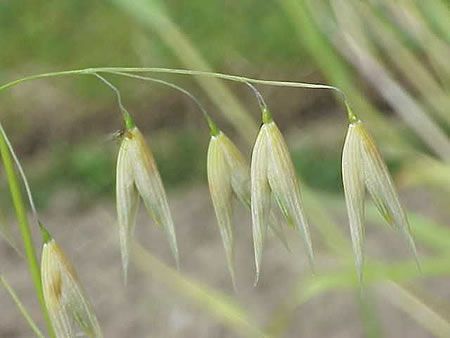
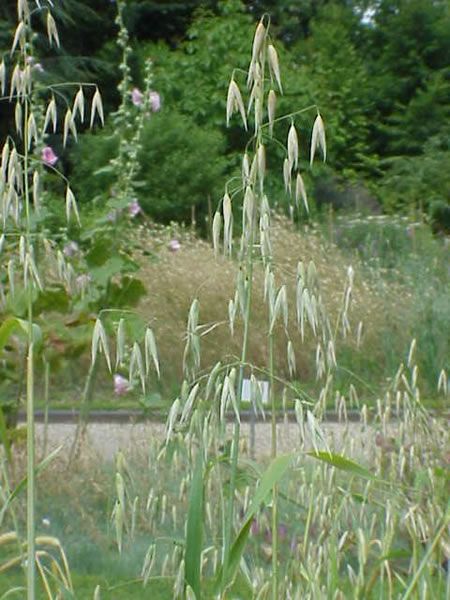
Greek name: Αγριοβρώμη.
Wild oat is an annual grass that reproduces by seed and causes serious problems for crops. When present in a wheat crop, the seeds mature before the wheat and fall to the ground before harvest. Since they are not removed from the field, the presence of wild grass is perpetuated.
What does the presence of wild oat in our field and garden indicate?
Its occurrence is associated with soils that are moist and poorly drained.
It also occurs when low temperatures prevail in the seedbed, soil crusting occurs on the surface and low porosity, resulting in increased surface tension of soil aggregates.
Almost every field has areas where soil conditions are conducive to the growth of wild oats. Again, pH is expected to influence the proper drainage of that area. Moist soils are easily blocked by some heavy rainfall. Anyone who bothers to do a soil analysis where wild oats occur will usually discover a lack of calcium, low magnesium, high sodium and potassium. There are many fields with 100-200 pounds of sodium per acre.
Cockspur grass (Echinochloa crusgalli), genus Graminae
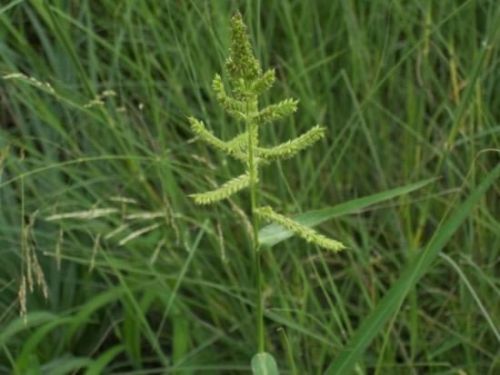
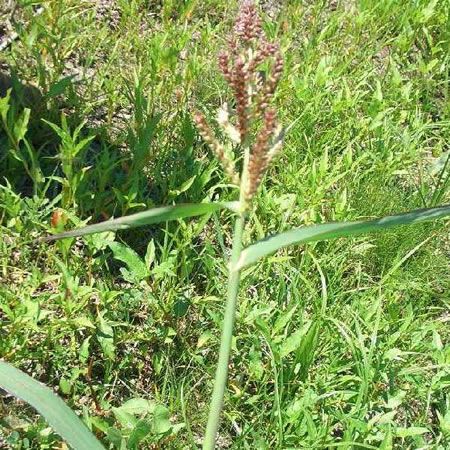
Greek name: Μουχρίτσα.
This weed is known with many names: cockspur (or cockspur grass), barnyard millet, Japanese millet, water grass, barnyard grass.
Cockspur is an annual grass that reproduces by seed. In addition to landfill sites, it also occurs in cultivated areas.
What does the presence of moor-grass in our field and garden indicate?
Where cockspur grass is dominant, potassium is at very high levels and its presence means that other elements are also at high levels, such as magnesium, manganese, sulphur, boron, chlorine, selenium, zinc and copper. Cockspur is favored by insufficient levels of calcium and phosphorus. It is also favored in soils poor in organic matter and humus, where there is a precipitation of fine soil fragments and the formation of sub-surface crusts.
Velvetleaf (Abutilon theophrasti), loc. Malvaceae

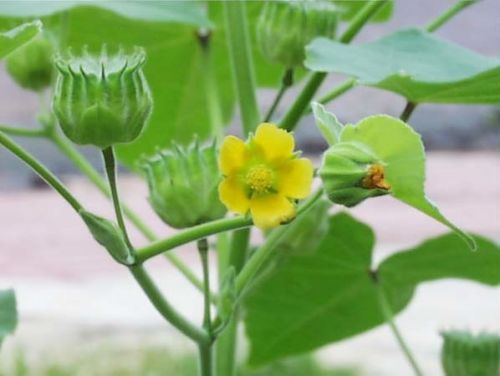
Greek name: Αγριοβαμβακιά ή Αγριοσουσαμιά.
This weed is known with many names: Velvetleaf, velvet plant, velvetweed, Chinese jute, China jute, crown weed, buttonweed, lantern mallow, butterprint, pie-marker, Indian mallow.
Velvetleaf is an annual grass that reproduces by seed, usually in cultivated soils but also anywhere other than grass meadows or lawns.
What does the presence of velvetleaf in our field and garden indicate?
The appearance of the velvetleaf is an early sign of great importance. It indicates that the decomposition of organic matter has taken a wrong turn, and methane is being produced instead of carbon dioxide. Free phosphorus has been bound, and the anaerobic microorganisms have been inactivated. In soils where velvetleaf occurs there is a carbon problem. Also, fertilization with chemical fertilizers containing potassium and nitrate ions leads to the occurrence of this wild grass. Herbicides also favor the maintenance of its presence.
When wild velvetleaf occurs, we have low phosphorus or the elements are bound. In contrast, potassium and magnesium are high, as is selenium. When anaerobic conditions prevail, manganese, iron, sulphur, copper, boron and chlorine are released and are highly available. The reduction in humus content, low porosity and low decomposition rate translate into high humidity, resulting in sticky soils with crusts and the release of clay. At the same time, the soil also has a high salt content.
Common purslane, also known as little hogweed (Portulaca oleracea), genus Portulacacea
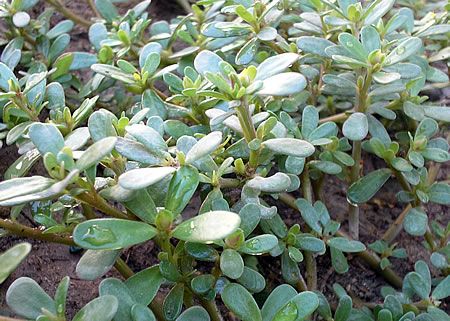
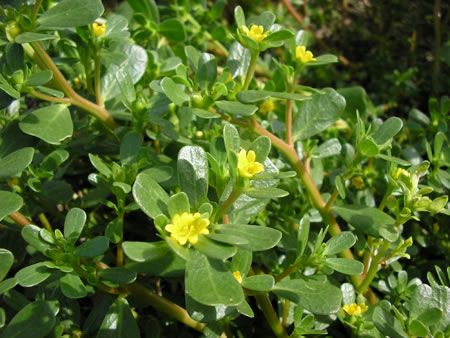
Greek name: Γλυστρίδα.
Common purslane is an annual weed that is reproduced by seed. Control of the weed is simple in the young stages but even if the plant is uprooted, it remains alive and produces seeds.
It is not an undesirable weed as it is edible and can be cooked like spinach and has a slightly acidic taste. Remarkably, although common purslane is 92.5% water, it contains 3.5mg of iron per 100g of plant mass, and is the highest iron content, after parsley.
It is used for salad. Also, animals like pigs and chickens love it.
What does the presence of common purslane in our field and garden indicate?
Seeds cannot establish and give rise to a new plant if there is no balance in cation exchange capacity, and the pH is properly regulated with calcium, magnesium and potassium in the right proportions.
Even more important is soil aeration.
Soils in which this weed occurs have high levels of potassium and magnesium. We also have high iron and copper release.
On the other hand, where it occurs we have low levels of calcium and phosphate.
The aerobic organisms go out of action under conditions of low soil porosity and low humidity. Hence we have soil acidification from the release of iron and copper.
Common purslane has a particular preference for well-cultivated soils, and is commonly found in gardens.
The presence of common purslane near rose trees helps them against the beetles that attack them.
Hairy crabgrass (Digitaria sanguinalis), genus Digitaria
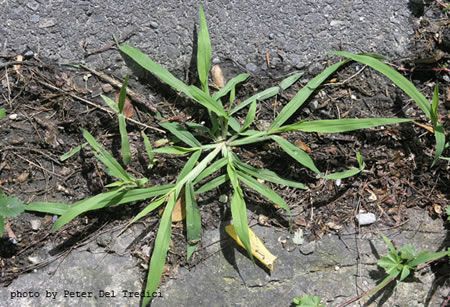
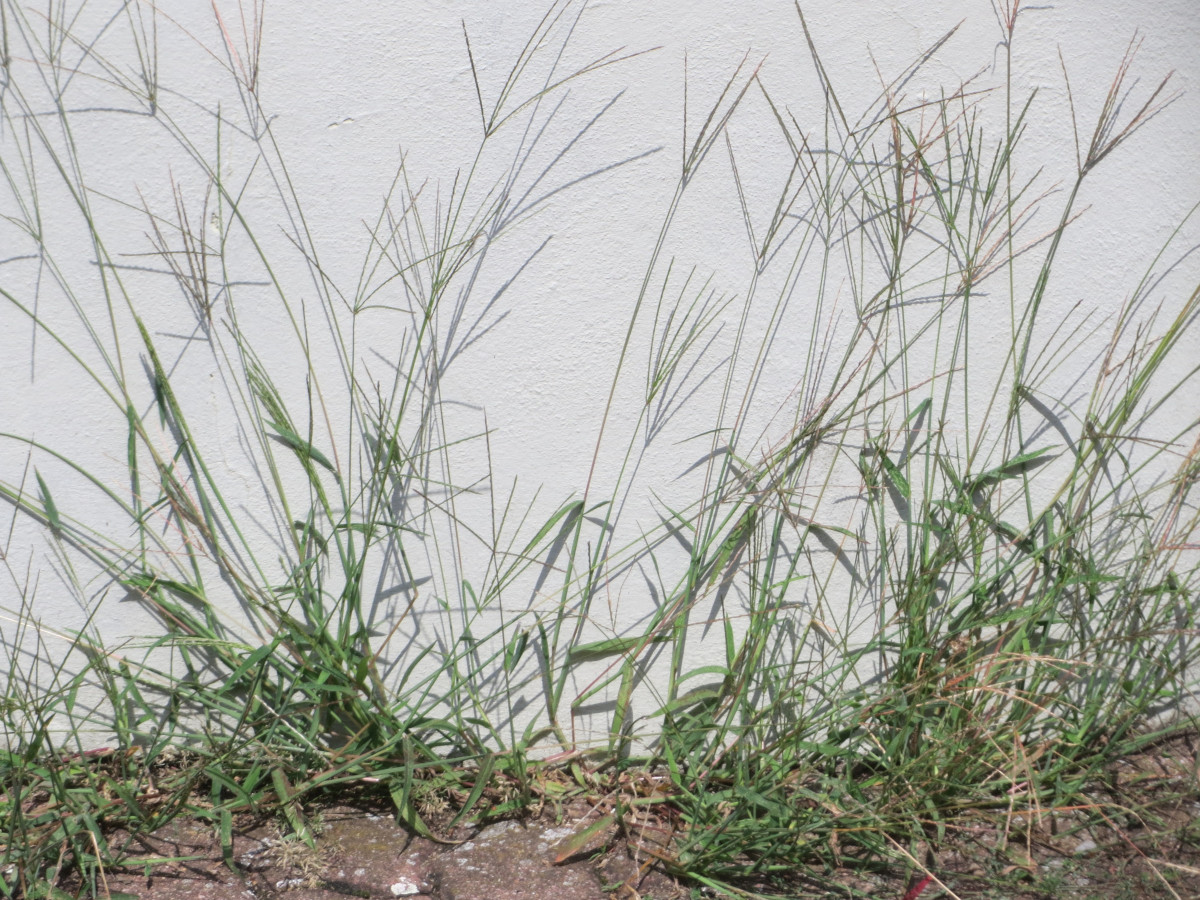
Greek name: Αιματόχορτο.
This weed is known with many names: Hairy crabgrass, hairy finger-grass, large crabgrass, crab finger grass, purple crabgrass.
Hairy crabgrass is widespread in vineyard gardens, cornfields, roads. It is an annual weed that reproduces by seed and also by underground shoots. The weed dries out with the first frosts.
What does the presence of hairy crabgrass in our field and garden indicate?
Its appearance indicates that the soil is poor in calcium and cannot support the onset of decay by actinomycetes.
Bindweed (Convolvulus spp.), family Convolvulaceae
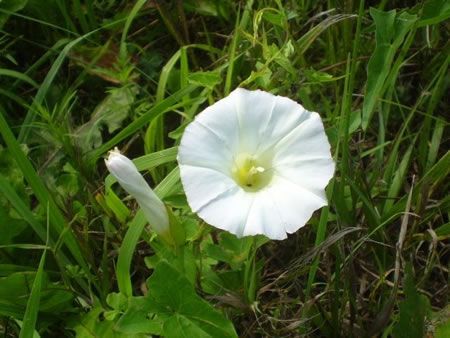
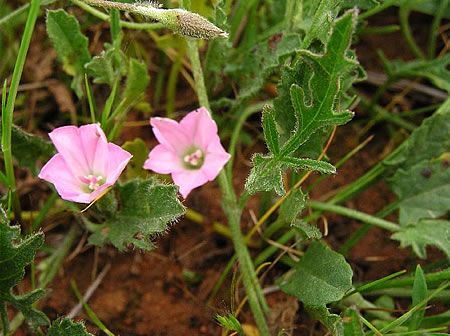
Greek name: Περικοκλάδα.
Other common names: Bindweed, morning glory.
Bindweed occurs in many types of crops (cabbage, tree crops, etc.) but also in sites with open vegetation (roadsides, sand piles, waste disposal sites).
It is a perennial weed that reproduces by seed and by rhizomes. It is very closely related to Convolvulus arvensis. It is a climbing plant that survives almost anywhere, even on eroded hillsides that are well drained and the soil is dry.
What does the presence of bindweed in our field and garden indicate?
Bindweed grows in almost all soils especially in dry warm and light soils with permeable subsoil.
It is a characteristic indicator of a wrong course of decomposition of organic matter, and excessive concentration of heavy metals in the soil.
The presence of straw or manure heaps and, in general, the accumulation of organic matter in one place causes the above situation and favors the establishment and spread of bindweed. This weed is fond of abundant humus materials, to which however, a competitive relationship prevails.
However, it also thrives on soils eroded and with little humus, which cannot guide the decomposition of organic matter in the right direction. Low levels of calcium, phosphorus, and low pH are reference points for the weed.
The consequences are sticky soil and crust formation. Most climbing weeds have the ability to germinate rapidly, and their rhizomes spread and dominate the entire soil system.
Their spreading has an adverse effect not only on the growth of other plants but also on soil organisms. Such conditions can occur in clayey soils to sandy soils. In soils with high or low organic matter content.
What they all have in common, however, is that they all impose restrictions on the proper decomposition of organic matter. Such soils are incapable of properly managing humic balances and systems. As a result of the incorrect decomposition of organic matter, an imbalanced hormone-enzyme system is created, leading to the inability of the soil to properly supply plants with nutrients.
The reasons for the above situation are related to dry and biologically inert organic matter, which is caused by either a dry autumn or a wet spring. This situation is complemented by incomplete cultivation of the soil and soil compaction. The parameters related to this condition are the pH, the type of clay colloids (structure), and the drainage and aeration capacity of the soil, especially of the organic matter.
Clotbur (Xanthium spp.), family Asteraceae
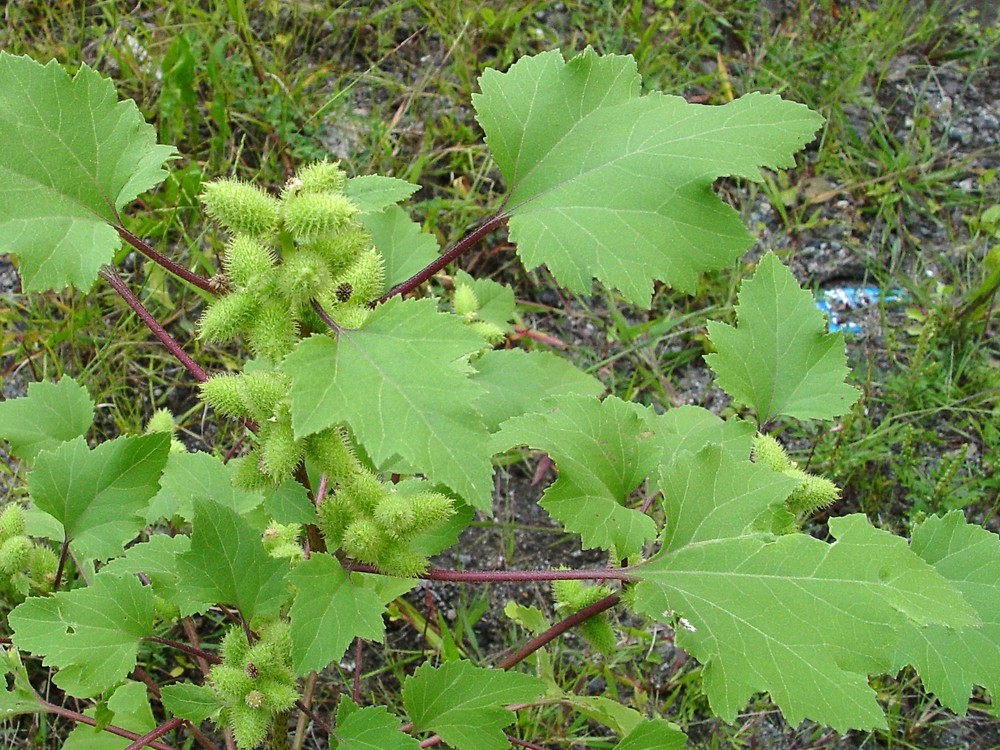
Greek name: Ξάνθιο το Χοιράδιον.
This weed is also known with many other common names: Clotbur, Cocklebur, Common Cocklebur, Donkeybur, Donkey Burr, Heartleaf, Rough Cocklebur, Woolgarie Bur.
Clotbur is an annual grass that is propagated by seed. This weed contains a poison in its cotyledons. There are other related species of the weed and it is often difficult to distinguish between them. But on the other hand it causes problems for crops.
What does the presence of Clotbur in our field and garden indicate?
The presence of Clotbur indicates that there is an abundant amount of available (assimilable) phosphorus in the soil, and that the pH is at an acceptable level. High levels of phosphorus bind zinc, which affects the weed’s hormonal processes.
It spreads in soils where high levels of phosphorus and a reasonable and correct pH level are available.
Only when the pH is correctly adjusted can a significant amount of phosphorus be released. High phosphorus, on the other hand, binds (competes) with zinc. In this situation, the weed germinates.
Stinging nettle (Urtica dioica), family Urticaceae
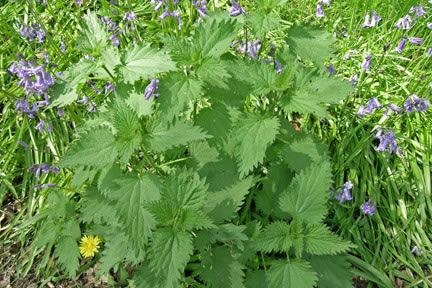
Greek name: Τσουκνίδα.
Other common names for this weed: Nettle, common nettle, burn nettle, stinging nettle.
Stinging nettle is found in unimproved permanent pastures, rarely in meadows, often in rubbish dumps, hedgerows and woods. It is found in vegetable crops and is often a nuisance in cereal crops.
Nettle makes neighbouring plants more resistant to insect infestations. It also helps plants resist slug infestations during wet weather, strengthens the germination of mint and tomatoes, and gives more fragrance to aromatic plants such as valerian, marjoram, and mint.
Nettle also delays fermentation, thus enabling the fruit to keep longer. Fruit packed in nettle biomass ripens faster.
Nettle is also useful in the fermentation process of compost or manure. Better results, with less effort, can be obtained when we add nettle to the compost in its normal form and before it forms seeds.
Nettle contains carbonic acid and ammonia which are factors in the activation of the compost. If there is a place available it is worth planting nettle there and using it for various uses there are droplets of formic acid in the leaves of nettle which irritates the skin when they come into contact.
Nettle can be used in compost as it speeds up and aids fermentation and contains iron.
The presence of stinging nettle in fruit tree crops is recommended. The oil contained in mint is increased when it is intercropped with nettle.
Nettle belongs to the category of weeds that are fond of cultivated areas.
What does the presence of nettle in our field and garden indicate?
It loves nitrogen, and so it is found in very well-cultivated soils.
Dandelion (Taraxacum officinale), family Asteraceae
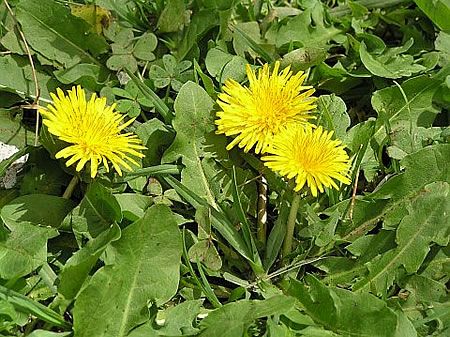

Greek names: Αγριοράδικο, Πικραλίδα.
Common names: dandelion or common dandelion.
Dandelion is a perennial plant, very vigorous, and does not compete with surrounding cultivated plants due to its very deep root system reaching a depth of up to 1 meter.
It is worth noting that dandelion releases ethylene, which affects the height and germination of neighboring plants, and causes early ripening of the surrounding flowers and fruit.
Dandelion absorbs twice or three times the amount of iron from the soil than other plants. So adding it to compost is valuable. It is favourable for co-cultivation with alfalfa (Medicago sativa).
What does the presence of dandelion in our field and garden indicate?
Dandelion prefers deep and balanced soils. If you see dandelion in your field be assured that you have little to no calcium availability from soil colloids. In either case, the calcium is in short supply or is not assimilable.
Dandelion is nature’s attempt to enrich the soil in calcium.
This plant sends its roots about 1 meter deep into the earth carrying calcium and other elements to the surface.
Earthworms love the soil around the wildflower. They exploit the roots of dead plants to facilitate the opening of their tunnels, and the decomposing roots are a good source of colloids for their diet.
The presence of the dandelion shows us that the organic matter residues in the soil are moldy, and prevent the availability of nutrients in the soil. It is also a symptom of overgrazing. It also indicates the presence of sedimentary deposits below the soil surface and possible crust formation which can be penetrated by the root system.
Bindii (Tribulus terrestris), genus Zygophylaceae
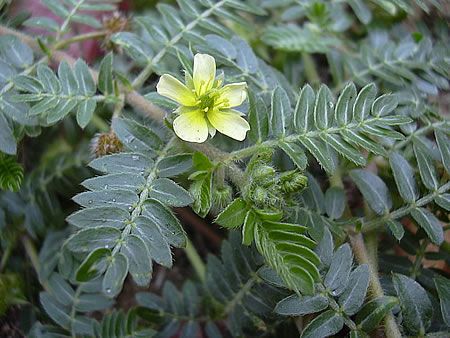
Greek name: Τριβόλι.
The Greek word, “τρίβολος” meaning “water-chestnut”, translated into Latin as tribulos. The Latin name tribulus originally meant the caltrop (a spiky weapon of similar shape), but in Classical times the word already meant this plant as well.
Other common names for this weed: bindii, goat’s-head, bullhead, burra gokharu, bhakhdi, caltrop, small caltrops, cat’s-head, devil’s eyelashes, devil’s-thorn, devil’s-weed, puncture vine, tackweed.
Bindii is an annual grass that reproduces by seed. Invades cultivated land but areas of residue deposition are the usual habitat.
Bindii is a “trap” plant for beetles of the family Meloidae, which attack the grass and leave the crop plants.
What does the presence of Bindii in our field and garden indicate?
The low calcium level and very low phosphorus level is the reference point for the existence and control of the weed.
Conversely, the levels of potassium, magnesium and manganese are high where bindii grows. The same is true for selenium, chlorine and sulphur, even if drainage and decomposition of decomposition residues are good to excellent.
Dodder (Cuscuta sp.), genus Cuscutaceae
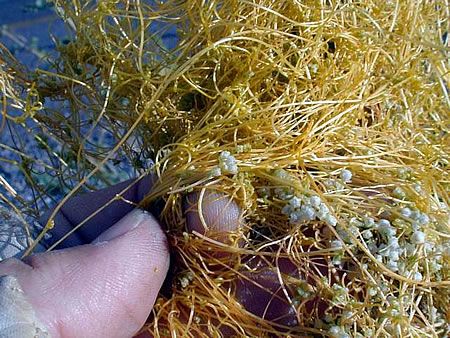
Greek name: Κουσκούτα.
Other common names: dodder, amarbel.
Dodder is an annual grass propagated by seed. It starts as an independent plant but quickly establishes a parasitic relationship with the host so that dodder loses all its chlorophyll. It is unique in that its leaves have no chlorophyll at all.
It is a parasite that grows on plants that have degenerated. It responds best to pH modifications due to calcium, magnesium, sodium and potassium in balance.
Common corn-cockle (Agrostema githago), genus Caryophyllaceae
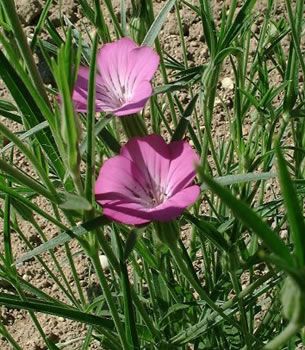
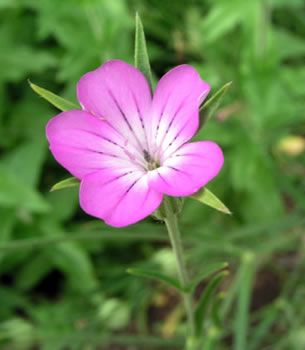
Greek name: Αγρόστεμα.
Other common names: Common corn-cockle, corncockle.
Common corn-cockle is an annual winter weed propagated by seed, especially in winter wheat and rye crops. When used with wheat in bread making, the bread takes on a bad taste.
What does the presence of common corn-cockle in our field and garden indicate?
Common corn-cockle grows in soils that have a high concentration of salts, when this is combined with a high pH due to high magnesium, potassium and sodium content. Phosphate levels tend to be low. Iron, copper, zinc, zinc, chlorine and selenium reach high levels. Many soils with a high pH require calcium, which is indicated by the presence of this grass.
Curly dock (Rumex crispus)
Image source: http://www.anpc.ab.ca/wiki/index.php/Rumex_crispus
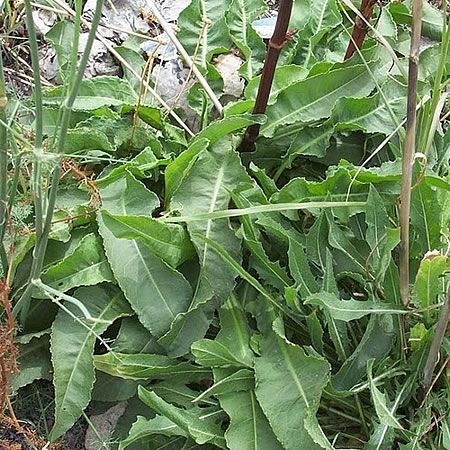
Greek name: Λάπαθο.
Other common names: curly dock, curled dock, yellow dock.
Curly dock is a perennial weed that is propagated by seed and occurs anywhere in uncultivated areas. Its relative Rumex altissimus also invades cultivated areas and causes damage to pasture and legume crops especially clover left in the field for 2 or more years.
The roots of the weed are used as a red dye for wool and also for making toothpaste.
What does the presence of curly dock in our field and garden indicate?
Curly dock loves calcium, nitrogen and heat. It grows especially in heavy clay to clayey soils.
Favors acidic soils, wet season with low or poor drainage and inadequate aeration. This is when the weed is active and germinates.
Soils where curly dock occurs have high levels of selenium, magnesium and phosphorus as well as abundant chlorine, boron, zinc, copper, sulphur, iron and manganese, and heavy salts. They are, however, poor in calcium. So we have interactions of the elements in the soil.
This weed is found in a variety of soils, but its existence is associated with carbon.
The appearance of the weed indicates the existence of an impermeable soil layer. It is also found in soils with excessive moisture, either due to poor drainage due to the impermeable layer, or when the spring is too wet. In such soils the decomposition of organic matter is done incorrectly (by inappropriate micro-organisms).
Chamomile (Marticaria chamomilla), family Compositae
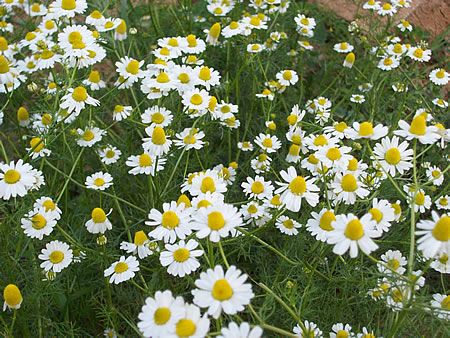
Greek name: Χαμομήλι.
The word chamomile comes from the Greek “χαμαίμηλον” meaning “earth-apple”, which is derived from “χαμαί” meaning “on the ground” and “μήλον” meaning “apple”. It is so called because of the apple-like scent of the plant.
Other common names for this weed: Chamomile (also spelled camomile), German chamomile, Hungarian chamomile (kamilla), wild chamomile, blue chamomile, scented mayweed.
Chamomile is found in clusters in winter cereal gaps also in summer cereals, in tuberous and clover as well as on roadsides.
The presence of chamomile (one plant per 30 meters) is particularly useful in growing cabbage or onions, since it helps their growth but also improves their flavor. It contains the substance hamazulin (χαμαζουλίνη) and has anti-allergic properties when used in the form of tea.
Apart from its known use by humans, its flowers can be used in the bedding of farm animals and next to dogs, since they drive away nits and freshen the place.
The cold extract of chamomile is used in plant protection. It is also excellent for preserving color in blond hair. Finally, it contains a hormone that helps the yeast to mature. Its presence in a mint crop, but in a very small proportion, increases its oil content.
It is worth noting that chamomile is very rich in potassium and calcium and its inclusion in compost is indicated.
What does the presence of chamomile in our field and garden indicate?
It is mostly found in nutrient-rich, yet calcium-poor (to no calcium), fresh clay or sandy red soil.
The presence of this weed indicates that a crust has formed on the soil and that it is hardening off.
Chamomile is a perforator of surface crust, and its presence favours the growth of wheat. This is only the case when chamomile is in low populations (up to 1%).
If a larger population of chamomile is observed, then it competes with the crop and will dominate. The fact that chamomile has appeared in large populations is an indication of the existence of a soil impermeable layer or crust, which prevents the crop plants from growing, but not the chamomile. This explains the development of a large population and the predominance of chamomile over cultivated plants.
Chamomile shows us that the soil was not cultivated sufficiently, that the soil was ploughed while it was too wet, or that acid fertilizers were used unilaterally. The sprouting of chamomile is a friendly and gentle warning that the crop rotation program needs to be corrected.
If this situation is not corrected, then more troublesome and damaging plants will be favored.
Plantain or fleawort (Plantago sp.), family Plantaginaceae

Greek name: Πεντάνευρο.
Other common names: plantains, fleaworts.
In meadows and pastures, plantain is quite common, while in clover fields it is very rare. It is most often found in streams and along roadsides.
It is typical that only one plant produces more than 3000 seeds. Plantain usually occurs with red clover, because its seeds infect the clover seeds.
Another characteristic of plantains weed is that it accumulates nutrients in its body, which are returned to the soil when the plant dies. It is also rich in alkaline ions such as calcium and magnesium.
What does the presence of plantains in our field and garden indicate?
Plantain prefers fresh to dry clay and sandy soils. Plantago lanceolata’s fertilization preferences are not high like Plantago major which has high fertilization needs.
These weeds occur in cultivated areas, and belong to the category of plants that follow in the footsteps of man in cultivation and have developed adaptations that cultivated plants have.
It is worth noting that this grass thrives best in acidic soils.
Common morning-glory (Ipomoea purpurea), family Convolvulaceae

Greek name: Πρωϊνή χαρά.
Other common names: common morning-glory, tall morning-glory, purple morning glory.
Common morning-glory is an annual grass propagated by seed in areas poor in organic matter and low decomposition.
It occurs in clumps of trees and shrubs or in gardens, which are in any case neglected.
The presence of weed in maize crops is favourable but it must be removed before it produces seed, as it will then be a problem for many years.
What does the presence of common morning-glory in our field and garden indicate?
Calcium levels are very low where common morning-glory occurs.
Also low is the level of phosphorus and on the contrary the levels of potassium are extremely high.
A set of complexes of nutrients high magnesium, iron, sulphur, copper, zinc, boron and selenium determine the appearance of this wandering plant.
Creeping thistle (Cirsium arvense), family Asteraceae
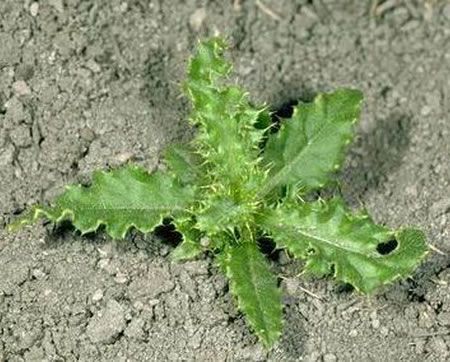
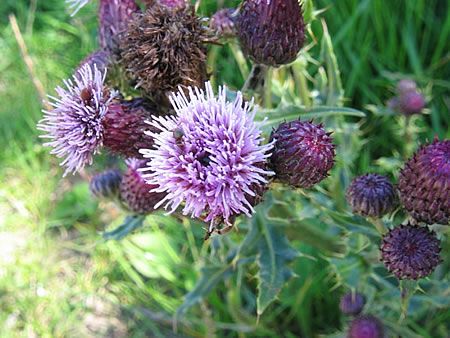
Greek name: Κίρσιο.
Other common names: Creeping thistle, Canada thistle, field thistle.
Creeping thistle is a troublesome weed which, by its vigorous absorption of water and nutrients, can be a dangerous pest in cereals and pastures. It spreads along roadsides, in forest gaps and on banks.
It is a perennial weed that reproduces by rhizomes and seeds. It causes problems for crops while reaching a height of 2.5 meters. It is often confused with common thistle. This weed responds to magnesium.
What does the presence of creeping thistle in our field and garden indicate?
Creeping thistle is found in a variety of soils, especially soils where it begins to harden off after plowing, and it loves nitrogen.
Creeping thistle likes low calcium, and very low magnesium. In contrast, iron is very high. Also its appearance is characteristic of low decomposition of organic matter and the presence of anaerobic bacteria.
It occurs in a wide variety of soils. It is favored in soils with low iron levels, low calcium, and poor soil organic matter structure.
When calcium does not have the ability to control the release of elements, and pH is not properly regulated, we have excessive release of certain metals.
Its presence also indicates a low phosphorus level, either due to food deficiency or because phosphorus is bound. Both of the above are due to organic matter deficiency.
Shepherd’s purse (Capsella brusta-pastoris), family Brassicaceae

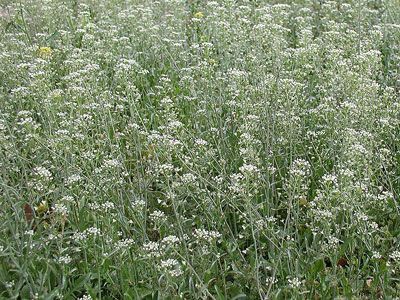
Greek names: Αγριοκάρδαμο, Αγριοκαρδαμούρα, Καψέλλα.
Shepherd’s purse is an annual winter weed that reproduces by seed and is adapted to a wide range of conditions (habitats). It occurs very often in barren pastures during the dry season.
It is very rich in nutrients. During its growth it is a demanding plant as it absorbs many nutrients, but these are returned to the soil after the death of the weed and in organic form.
It occurs on arable land, mainly in tuber crops, cereals (summer and winter) in gardens, on roadsides and in litter. It has zero preferences and will grow in any soil type as long as it is not compact and has an impermeable layer.
It is good grazing for sheep.
Chickweed (Stellaria media), family Caryophyllaceae
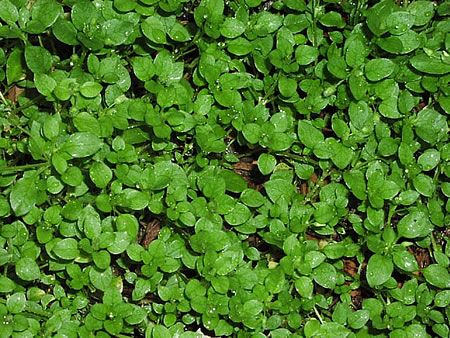
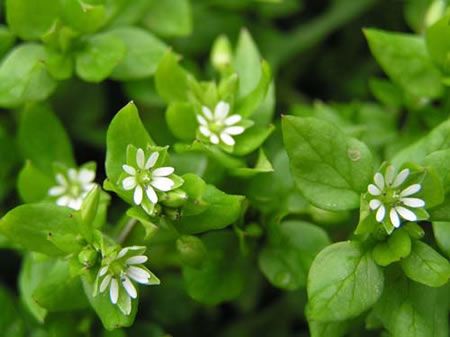
Greek name: Στελλάρια.
Common name: Chickweed.
Chickweed is an annual or annual winter weed. In cold areas it survives in summer and behaves as a short-lived perennial.
The weed is sacrificial, showing slight dolphinism. It reproduces by seeds and by all forms of rhizomes and creeping shoots. Once established, the weed covers the ground, creating a carpet, which makes it difficult for air and water to circulate in the soil and for it to be exposed to sunlight.
What does the presence of chickweed in our field and garden indicate?
Chickweed germinates where there is a considerable amount of active organic matter, mainly on the surface of the soil, or to a lesser extent, in deeper layers.
Its presence indicates that excessive organic matter has accumulated, from grass that has not decomposed, or that a considerable amount of peat and manure has accumulated.
The organic matter releases acids into the soil and releases excessive amounts of nutrients which cause toxicity (burning) of the grass or vegetables. This situation is an invitation to chickweed, which establishes itself in such soils.
Sometimes, the organic matter has entered the process of decomposition, then dries out, rewets, and dries out again. This has the effect of skewing the decomposition process, and in such cases chickweed disappears provided the pH is properly adjusted, i.e., neither too high nor too low.
Chickweed, illustrates soils in which crust has formed, and is compacted. Acids from incompletely decomposed organic matter cause excessive amounts of nutrients to be released. There is not enough colloidal material in the soil to hold them, so these elements dissolve in the soil water and leach out.
Source:
Technological Institute of Crete, Greece, School of Agricultural Technology, E.P.E.A.E.K , Supplementary Education Program “Organic Agriculture”.
Tags: BACONWEED • BINDII • BINDWEED • CHAMOMILE • CHICKWEED • COCKSPUR GRASS • COMMON MORNING GLORY • COMMON PURSLANE • COMMON THORNAPPLE • COMMON WILD OAT • CORNCOCKLE • CREEPING-THISTLE • CURLY DOCK • DANDELION • DODDER • EDIBLE GREENS • EUROPEAN HELIOTROPE • GREEN FOXTAIL • GUERNSEY PIGWEED • HAIRY CRABGRASS • HORSETAIL • JOHNSON GRASS • NETTLE • PLANTAINS OF FLEAWORTS • WEEDS


